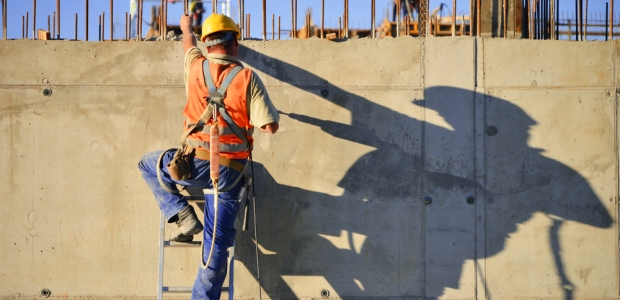
Fewer Construction Laborers Dying on the Job
Why the drop in fatalities has occurred and what can be done to make sure the trend continues are still to be determined, said Scott Schneider, director of Occupational Safety and Health for the Laborers' Health and Safety Fund of North America.
Scott Schneider, director of Occupational Safety and Health for the Laborers' Health and Safety Fund of North America (LHSFNA), reported in this month's Lifelines newsletter that the fatality rate for construction laborers in the United States has been falling in recent years, falling even faster than the decline in the rate of overall construction fatalities in this country. He cited a recent report from the CPWR – The Center for Construction Research and Training – as the source for the information about construction laborers' fatality rates.
"During the 11-year period between 2003-2014, both the number of fatalities and the fatality rate (number of deaths per 100,000 workers) for all construction workers was down overall. Some of this can be attributed to the recession that began in the late 2000s, which drove down construction employment for several years. Total fatalities and rates have increased slightly in recent years as work has picked back up, but both are still much lower than in 2003," Schneider wrote. "What about construction laborers? Although they still had the greatest number of fatalities (568 over the three year period of 2011-2013) in construction, this number is misleading because construction laborers make up the largest part of the construction workforce. A more accurate metric to measure safety is fatality rate (number of deaths per 100,000 workers), and the rate for construction laborers has been dropping. From 2011-2013, the average rate was 15.4 – significantly lower than several other occupations, including roofers (40.7), ironworkers (31.9) and power-line installers (48.6)."
He reported that the fatality rate for construction laborers has fallen steadily since 2003, when it was 27.9, adding, "In an industry where rates are still several times the national average among all jobs, the LHSFNA sees plenty of room for continued improvement. However, this increase in safety should be celebrated, especially when not all trades have seen such progress over the last decade."
Why the drop in fatalities has occurred and what can be done to make sure the trend continues are still to be determined, he said, explaining that the fund has been working hard to make construction safer in work zones, use of fall prevention, the oil and gas sector, and demolition work. "We at the Fund take this as a positive sign and inspiration for our work. We hope to see another 50 percent drop in the following decade as new workplace protections, including new OSHA regulations, increased fines, whistleblower protections and other initiatives go into effect. We strive to ensure that every construction laborer goes home safe and healthy at the end of every day. We have made a lot of progress towards that goal, but still have a long way to go," Schneider wrote.